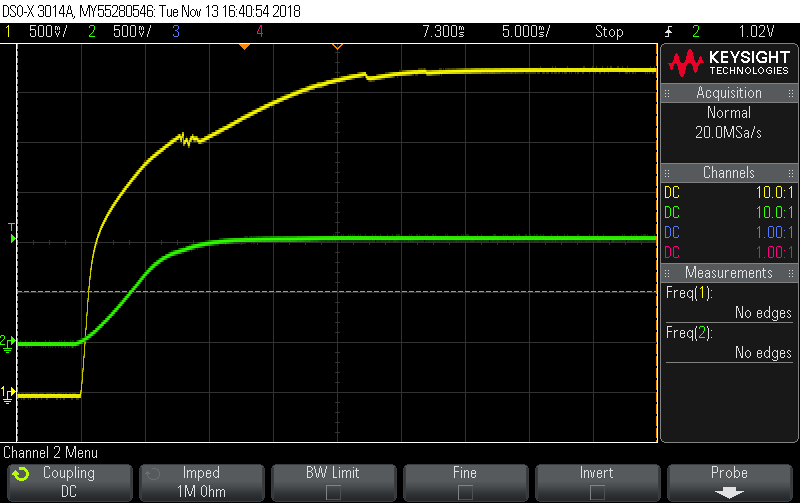Hi Sir:
We are using FRONT END 0 (EADC and DAC together) in Successive Approximation Mode, while we found some timing issue;
when there is bias voltage(around 1V) on EAP0/EAN0 before or during V33 rising, the final SAR calculation is always zero, do you know why? if the bias voltage is unavoidable how to use SAR under this condition? thanks a lot;
waveform is attached; CH1:V33, CH2:EAP0/EAN0;
thanks a lot;


